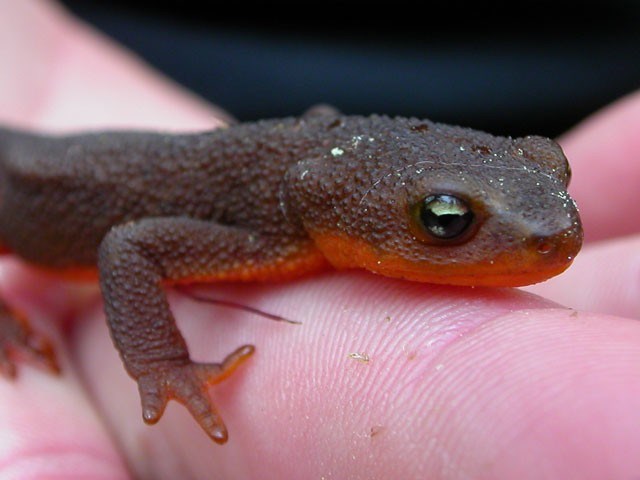Whistler Naturalists
Editor’s note: This column should have run in the spring.
Due to organizational challenges it didn’t. As a precursor to the fall bird
count we present spring’s results.
It was a banner season for unusual bird arrivals at Whistler. Eighteen species all told were unexpected, 10 of which were seen once or twice beforehand, but not in the spring. The biggest news is the first record ever of a Short-eared owl seen by three alert Nicklaus North grounds keepers flying low over the wetlands near dusk — the typical time of the day and habitat of this owl. It is seen quite often on Pemberton’s farmland and once in a while on the Squamish Estuary. So, this is the 11th species of owl which have been tallied locally, and the checklist for all species now stands at 248, enumerated in the 87 years of local birding.
While on the topic of owls, the other good sighting was a Saw-whet, seen by the “bottle ladies” in their backyard. And there was a Spotted owl rumour on Whistler-Blackcomb, but my own check could find only a very closely related Barred owl which has the same but not so aggressive hoot. It is the influx of the latter from the east which is part of the reason for the collapse of Spotted owl numbers in British Columbia.
The other “good” birds seen this season are as follows: our fourth record of an American bittern, seen near the Alta Lake viewing platform for a month! (nesting pair?); a lone White-winged scoter; a pair of Turkey vultures patrolling the Wildlife Reserve for about 10 days; three Golden eagle sightings; an amazing eight Caspian terns on Green Lake at month end — a good spot by Mike Suggate; the second records ever of Red-necked phalarope and Grashopper sparrow seen by Joan Plomske and Tom DeMarco, respectively; winter Common redpolls which hung around into April; second records of Pacific golden plover and Dunlin that were seen clearly on the Fitzsimmons delta; Morning dove and our second record of the Eurasian collared-dove at Nicklaus North — the latter slowly spreading out from its site of domestic release near Keremeos, B.C.; a Bullock’s oriole and second record of the Blackpoll warbler at Shadow Lake; rarely seen Dusky and Pacific-slope flycatchers on the edge of the Wildlife Reserve; and the Mountain bluebird inspecting potential nesting boxes at Nicklaus North, but for the second consecutive year they were scared away by a Northern harrier hawk and an American kestrel. Both of the latter are good raptor sightings for Whistler as well!
On the migration scene (for the usual summer residents and passers-through), the waterfowl arrivals (and departures) were not overly numerous for any species and quite sparse for a few. Only Green-winged teal were in above-normal numbers. Twenty-eight species were seen, including coots, and April 18 th was the busiest day for sighting good numbers of many, though 93 American wigeon at Nicklaus North on April 27 th was the highest daily species count at valley floor level. A flock of 150–200 Snow geese, flying high, were seen earlier in that month. The last date for the departing Trumpeter swans was April 16 th ; their numbers peaked in mid-March, several flocks of 20 or so flying through. By mid-May our lakes were virtually barren of waterfowl, though there are a few broods of Mallards, Canada geese and Barrow’s golden-eye about. Several species of the rarer waterfowl were missed this year, including three in the grebe family. Perhaps they will be seen coming back through in the autumn.
For songbirds the migration was very robust for the following species: juncos (which are now up on the mountain), robins, Yellow-rumped warblers, Ruby-crowned kinglets, Varied thrush (now on the mountain slopes as well), Yellow warblers, and at season end, the arrival of the melodious Swainson’s thrush. Flycatcher species are still low in numbers; swallows are about normal although strangely the Cliff swallow has yet to be seen. A pleasant surprise has been the return of the Evening grosbeak in sizeable flocks of 10 to 30, after years of hardly any sightings. This species, continent wide, has experienced dwindling numbers which have been a concern.
With May 31 st being the last day of the spring season, and with almost all local residents in nesting mode by that date, the species tally comes to 147, including the out-of-season additions, and the new owl. The published checklist shows 199 species for spring but over the last two years it has increased to 215, meaning that the recovery this year is 68 per cent. This is a shade low, roughly 35 to 40 other casual and rare species were not seen, though some could have passed through undetected. None-the-less, despite the low counts on waterfowl, and paucity of raptors and shorebirds, it was a darn good season for unexpected surprises. The concern in the spring, however, was the flood stage on our local rivers, wetlands, and lakes. Many nesting sites were likely flooded to reduce the number of successful broods for at least a few species. It will be a year or more before we can tell if there were significant losses.




